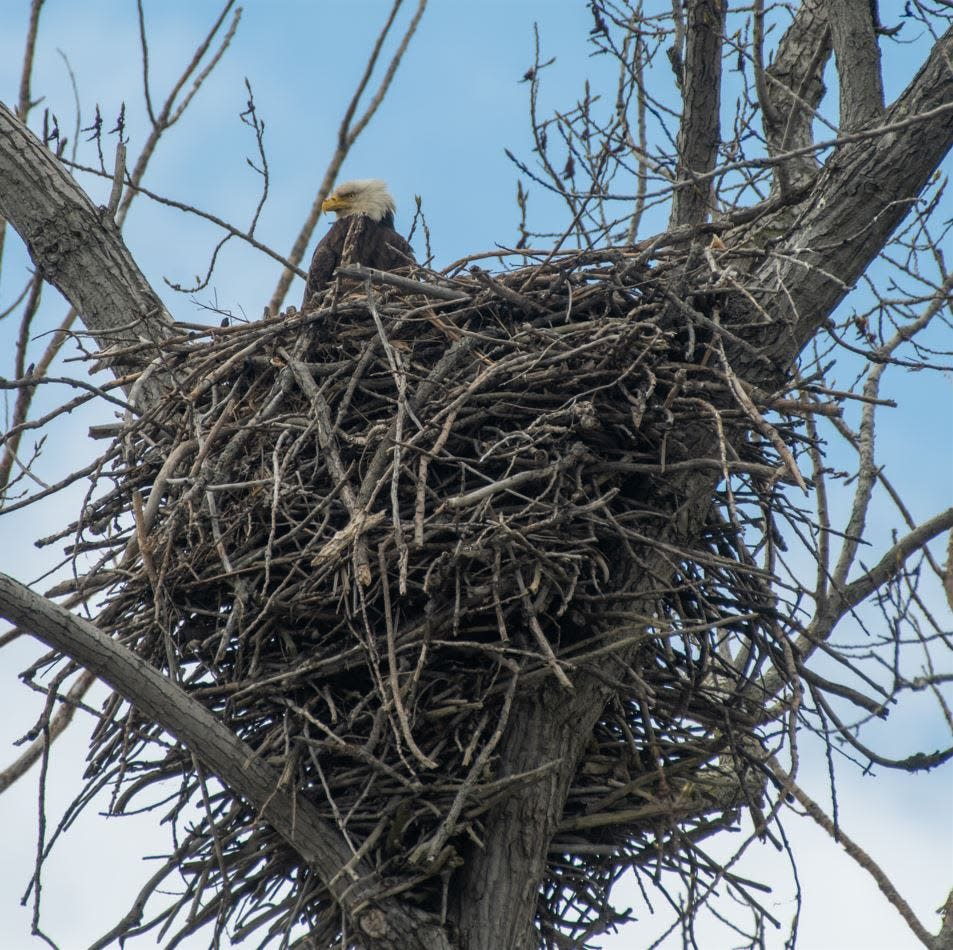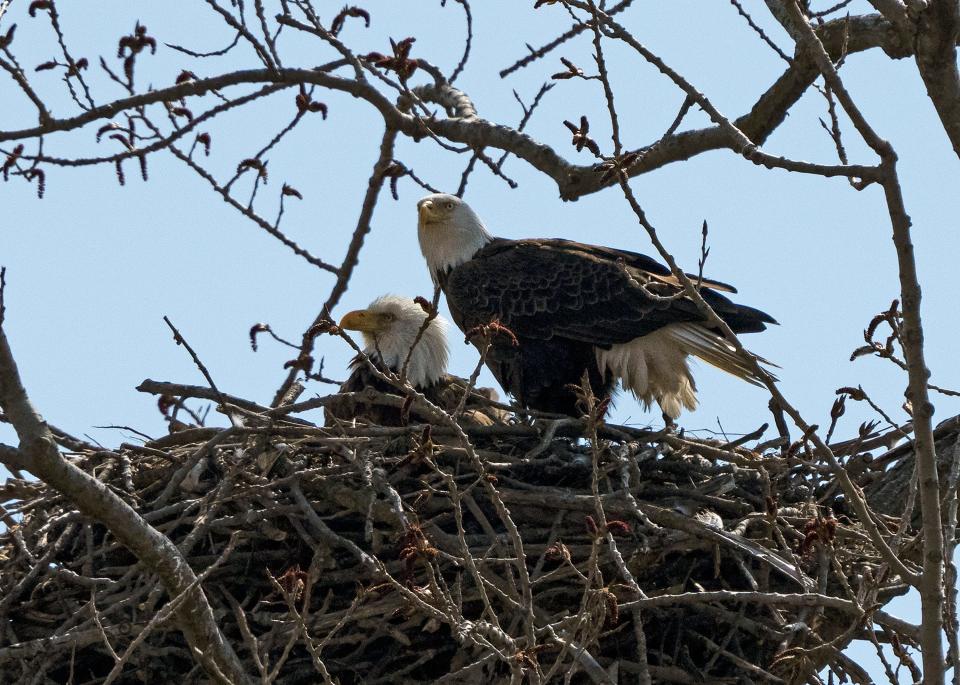Ohio's bald eagle population soaring just in time for July 4th, ODNR reports
The symbol of America continues to thrive in the Buckeye State.
Just in time for the Fourth of July, the Ohio Department of Natural Resources has announced that its 2024 annual spring survey, in a statement shared with the Dispatch, found a "robust" estimate of 841 active bald eagle nests, according to ODNR's Division of Wildlife.
That estimate is down from the 910 nests in 2023, but state biologists say several key indicators show "Ohio’s bald eagle population is resilient and continues to thrive," according to the statement.
Here's what to know.
Bald eagle nest success rate, number of eaglets growing in Ohio
The average nest success rate, which is the number of nests that have eggs or eaglets, this year was 82%, according to ODNR. That's a significant increase compared to 48% in 2022 and 73% in 2023.
Also, the number of eaglets per active nest was 1.6 in 2024, ODNR reports. That's also higher than 2022 (0.8) and 2023 (1.2).

Bald eagles were once an endangered species
In 1979, Ohio only had four nesting pairs of bald eagles. Through partnerships between the Division of Wildlife, Ohio zoos, wildlife rehabilitation facilities, concerned landowners, and conservationists, its population increased, according to ODNR.
Bald eagle management by the Division of Wildlife includes habitat conservation with an emphasis on wetlands and wooded river corridors, working with rehabilitators who help injured birds, and enforcing state and federal protection.
Thanks to those conservation efforts, the bald eagle was removed from the federal list of threatened and endangered species in 2007 and from Ohio’s list in 2012.
The birds are still protected under state law and the federal Bald and Golden Eagle Protection Act, making it illegal to disturb these raptors.
Bald eagle habitat and how to view them
Bald eagles prosper in spaces with clean water and fish, their preferred diet. Lake Erie and other large bodies of water host the highest number of eagles because of easy access to food, according to ODNR.
When viewing the birds, remember to respect their space and stay at least 100 yards away. Disturbing bald eagles at their nest site could lead the pair to abandon the eggs.
Where to see bald eagles in Ohio
Bald eagles can be found throughout the state.
In Northeast Ohio, nesting pairs can be found in Cuyahoga Valley National Park, in the Pinery Narrows area north of Station Road Bridge Trailhead or in the southern end of the park near the Beaver Marsh, according to the National Park Service. You can observe the Pinery Narrows nest from the Ohio and Erie Canal Towpath Trail.

In Central Ohio last summer, bald eagle parents returned to the Scioto River, just west of downtown Columbus. The nesting pair, dubbed Annie and Apollo, had two eaglets.
Elsewhere in the state, bald eagles can be found at:
Magee Marsh Wildlife Area (Lucas and Ottawa counties)
Pickerel Creek Wildlife Area (Sandusky County)
Ottawa National Wildlife Refuge (Lucas and Ottawa counties)
Mosquito Creek Wildlife Area (Trumbull County)
Killdeer Plains Wildlife Area (Wyandot and Marion counties)
Major rivers, such as the Muskingum, Hocking, Scioto and the Great Miami rivers in Southern Ohio
Spot a bald eagle nest? Report it to the Ohio Department of Natural Resources
If you spy a bald eagle nest, ODNR wants to know. All Ohioans can report a bald eagle nest at wildohio.gov or through the HuntFish OH mobile app.
Bald eagle nests in Kentucky growing
Kentucky recorded 187 bald eagle nests statewide in 2019, the last year data was available, according to the Kentucky Department of Fish & Wildlife Resources. That number has grown from 84 in 2010 and just one in 1986. COVID-19 restrictions in 2020 led to a pause in Kentucky's bald eagle nest surveys. After that, Kentucky changed plans to monitor nests in a rotating list of three regions each year.
This article originally appeared on Record-Courier: Ohio bald eagle population thrives ahead of July Fourth, ODNR reports

